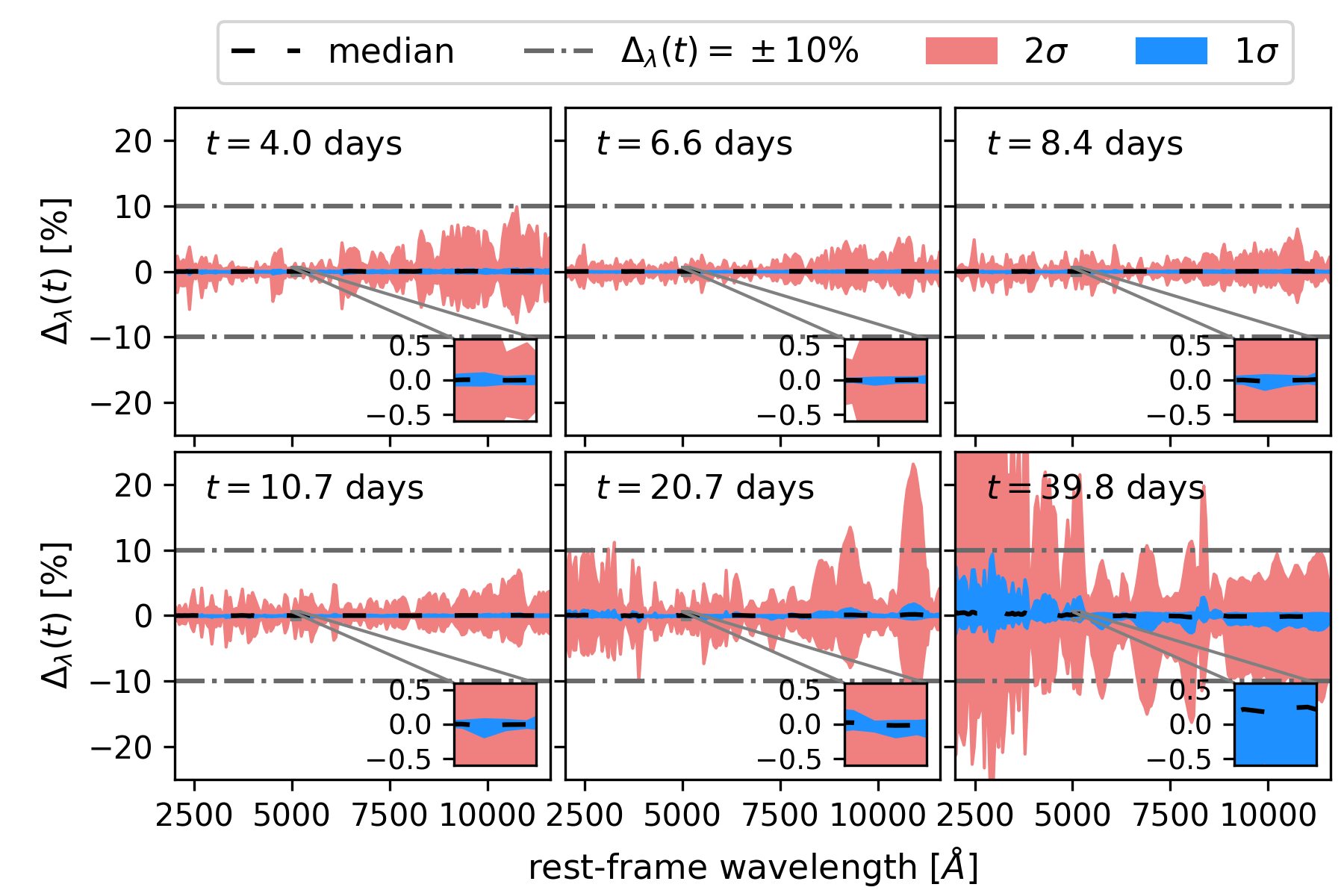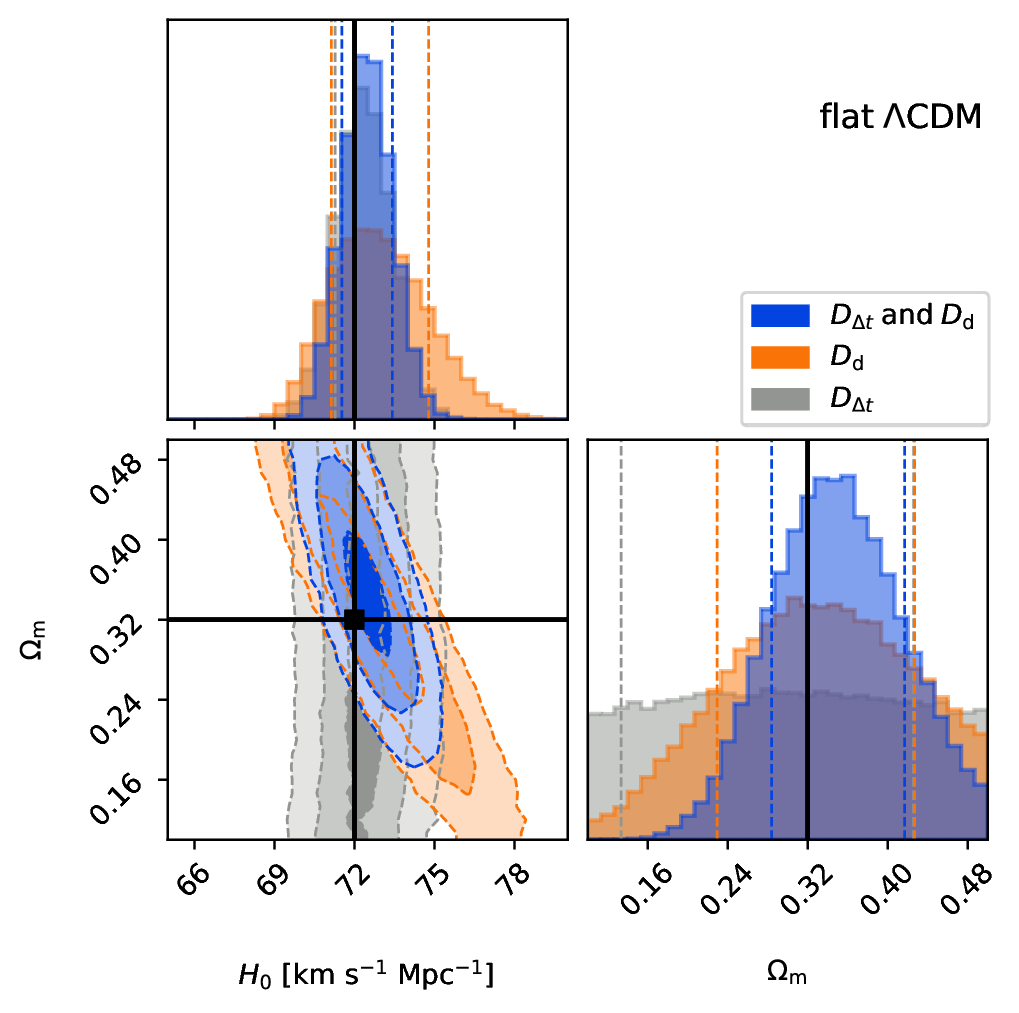HOLISMOKES. I. Highly Optimised Lensing Investigations of Supernovae, Microlensing Objects, and Kinematics of Ellipticals and Spirals
We present the HOLISMOKES program that aims to (1) unveil the progenitors of supernovae by obtaining early-phase observations of supernova explosions, and (2) measure the expansion rate of the Universe, i.e., the Hubble constant H0. To achieve these two goals, we utilise strongly lensed supernovae, which occur when a supernova is gravitationally lensed by a foreground galaxy, and multiple supernova images appear one after another around the foreground lens galaxy.
Each image of the supernova is further microlensed by the stars in the foreground lens galaxy. Microlensing distorts the spectra and light curves of the supernova, depending on the positions of stars in the foreground lens galaxy. We investigated the effects of microlensing, particularly in the early phases of type Ia supernovae, using four supernova explosion models from the ARTIS simulations (Kromer & Sim 2009) and the microlensing maps from GERLUMPH (Vernardos et al. 2015). As an example, the figure below illustrates the relative distortion of the spectra for the W7 supernova explosion model, for different rest-frame times after explosion, as indicated on the top of each panel. From 300,000 microlensing realisations, we compute and show the 1σ spread in blue and the 2σ spread in pink. For all four supernova explosion models, we find that distortions of type Ia supernova spectra due to microlensing are typically negligible within ten rest-frame days after a supernova explosion (<1% distortion within the 1σ spread and ≲10% distortion within the 2σ spread). This shows the great prospects of using lensed supernovae to obtain intrinsic early-phase supernova spectra for deciphering type Ia supernova progenitors.

We forecast the cosmographic constraints from a sample of 20 lensed type Ia SNe from the upcoming Rubin Observatory Legacy Survey of Space and Time (LSST). Through the time delays, high-resolution lensing images and stellar kinematic measurements of the foreground lens, we can infer two distances to each lensed supernova system: time-delay distance, and the angular diameter distance to the lens galaxy. Adopting realistic yet conservative uncertainties on the time delays, lens mass models and line-of-sight structures, we obtain uncertainties on the time-delay distances and lens angular diameter distances for these lensed supernova systems, of 6.6% and 5%, respectively. Below is a figure illustrating the constraints on the cosmological parameters, the Hubble constant H0 and the matter density ΩM, in the standard flat ΛCDM model. The different colors correspond to constraints from different distance measurements: grey for time-delay distances only, orange for lens distance only, and blue for both time-delay and lens distances. The dashed contours indicate the 68%, 95%, and 99.7% credible regions, whereas the vertical dashed lines in the histograms indicate the 68% credible intervals. The input values are denoted in black and are recovered within the marginalised 68% credible intervals in 1D (or within the 95% credible regions in the 2D H0-ΩM plane). We find that a sample of 20 lensed type Ia supernovae would allow us to constrain H0 with 1.3% uncertainty in the flat ΛCDM cosmology. We find a similar constraint on H0 in an open ΛCDM cosmology, while the constraint degrades to 3% in a flat wCDM cosmology. We anticipate lensed SNe to be an independent and powerful probe of SN physics and cosmology in the upcoming LSST era.

